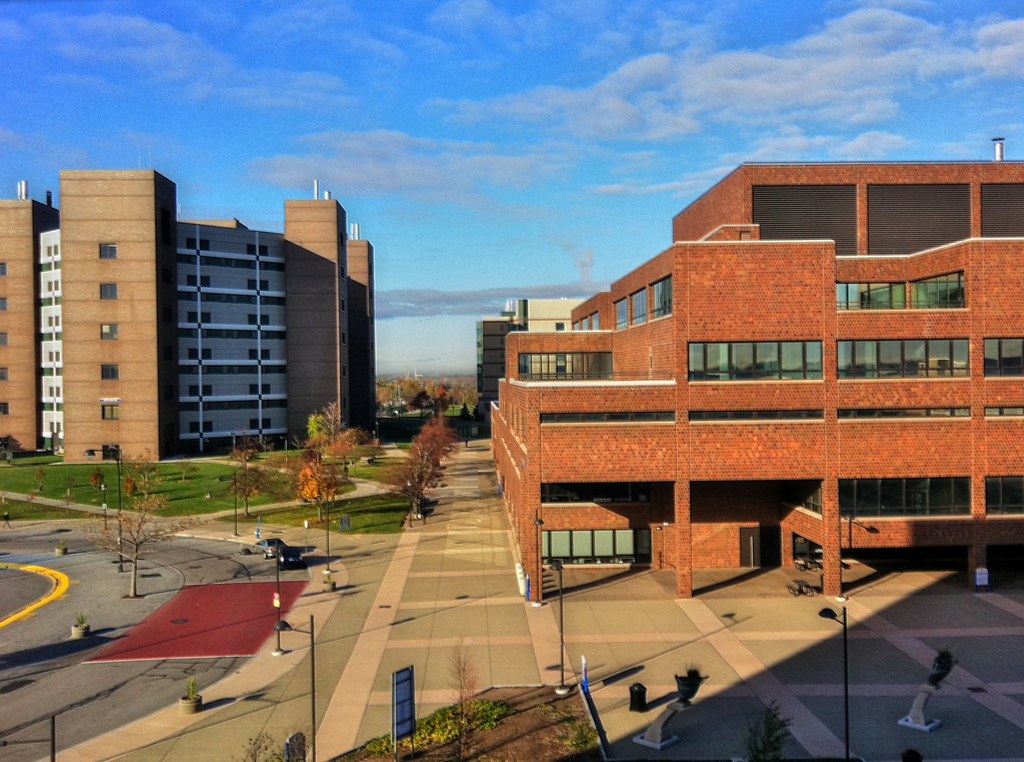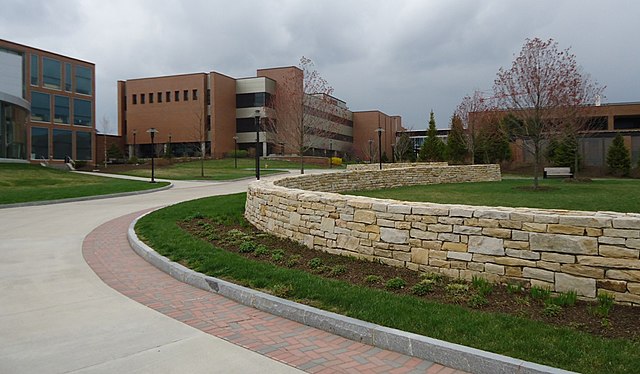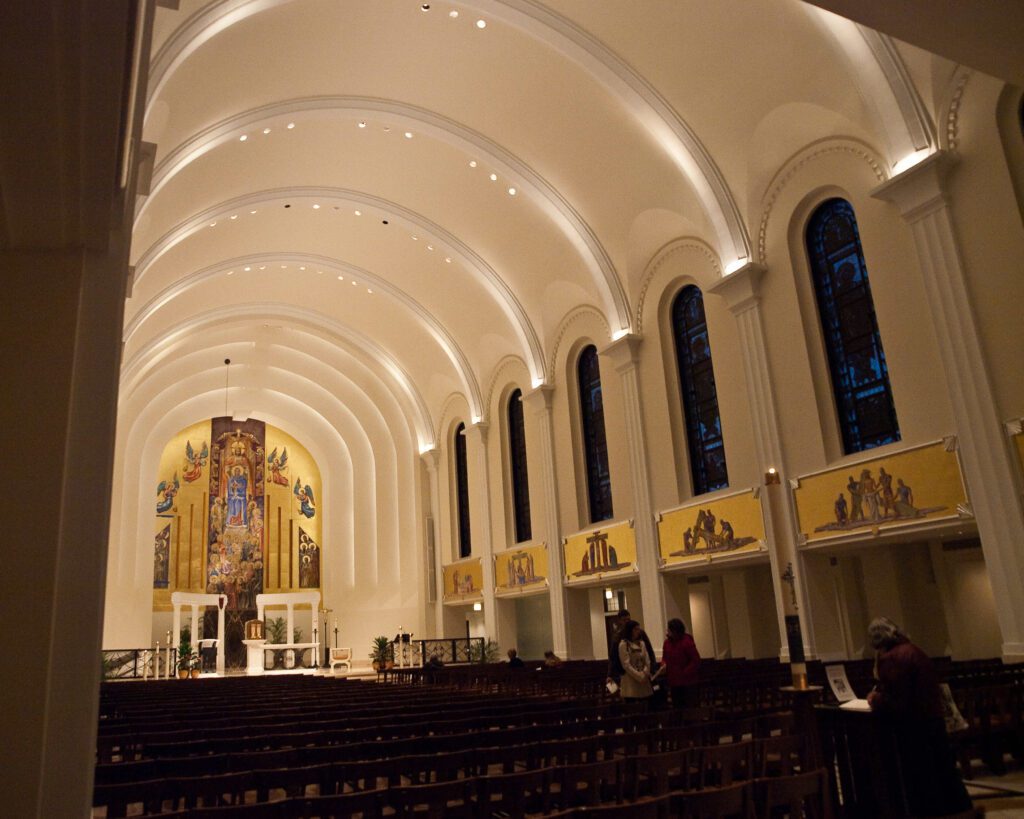
Applying to Colleges with Rolling Admissions
Many students are interested in applying to colleges with rolling admissions. However, colleges with rolling admissions can also be somewhat of a mystery. Questions like “What is rolling admission?” or “How is rolling admission different from ‘regular’ admission?” are common among many applicants. If you don’t know where to start, you may even find yourself typing “rolling admission meaning” into your search bar.
If you’re considering applying to any colleges with rolling admissions, you’re in the right place. In this guide, we’ll cover everything you need to know about rolling admission colleges, including:
- A simple, straightforward “rolling admission meaning”
- Our list of some of the best colleges with rolling admissions
- How to apply to colleges with rolling admission
- When to start the application process for rolling admission colleges
- The benefits and downside to colleges with rolling admissions, and much more!
First things first, let’s start by answering the all-important question: what is rolling admission?
What is Rolling Admissions?

So, what is rolling admission? Simply put, colleges with rolling admissions evaluate applications as they receive them. This means that if you submit your application to colleges with rolling admissions at the beginning of November, the admissions committee will likely review your application in November, the same month you submitted it. As such, colleges with rolling admissions generally let you know whether you have gained admission much sooner than colleges with regular admissions.
When you’re looking at colleges with rolling admissions online, take note of the language on their websites. Do they state that you will receive a decision on a certain date or by a certain date? If you gain admission by a certain date, then that college likely has rolling admissions.
What is a Priority Deadline?
Many colleges with rolling admissions also have priority deadlines. Therefore, if you see “priority deadline” on a college’s website, that’s a good sign that their admissions are rolling. But, what exactly does that term mean?
Priority deadlines are school-specific deadlines by which students should apply to be considered for certain school-specific advantages. Unlike other college application types, these college application deadlines aren’t harsh cutoffs for admission. Instead, they’re meant to convey when students should apply to have the best chance at limited opportunities, such as scholarships or financial aid.
As you’ll soon find out, there are many advantages to applying to colleges with rolling admission, whether you apply by the priority deadline or not. However, before we get into the benefits of colleges with rolling admissions, let’s look at some of the best rolling admission schools in the country.
Top 21 Colleges with Rolling Admissions
Now that we’ve answered the question “What is rolling admission?”, you’re probably curious to know what schools have it. Below, you’ll find our list of the Top 20 Colleges with Rolling Admissions, ranked according to U.S. News.
Top 21 Colleges with Rolling Admissions
1. Rutgers – New Brunswick

At #1 is Rutgers, a top-ranked public university in New Jersey. Rutgers is a large public university with an undergraduate size of 36,344. Ranked #40 among National Universities, Rutgers Admissions accepts 66% of their applicants. To have the best chance of impressing the Rutgers admissions committee, you can apply by the priority deadline of November 1. However, since Rutgers admissions are rolling admissions, you can also still apply after all the deadlines have passed.
2. Purdue – West Lafayette

Following close behind Rutgers at #43 in National Universities is Purdue. Located in West Lafayette, IN, Purdue is another large public university with a priority deadline of November 1. Purdue offers lower tuition for in-state applicants. So if you’re an Indiana student looking to apply to colleges with rolling admissions, consider Purdue! The admission rate to Purdue is 53%, but their website states that your chance of gaining admission increases the closer you apply to the application opening. The application becomes available on August 1. Additionally, Purdue ranks #18 on our list of Best Public Universities.
3. University of Minnesota, Twin Cities

Third on the list is the University of Minnesota, Twin Cities. This is a public university with an urban campus located in the Twin Cities: Minneapolis and St. Paul. According to U.S. News, the Twin Cities are known for their cleanliness, sports teams, and volunteer culture. The admissions rate for the University of Minnesota, Twin Cities is 75%. Ranked #53 nationally, students aiming for the University of Minnesota’s priority deadline should plan to apply by November 1.
4. Pennsylvania State University

According to U.S. News, there is “rarely a dull moment” at Penn State! As a rural Pennsylvania college located in a lovely college town, Penn State is a great choice if you want to take advantage of everything that a large public university has to offer. On campus, there is a thriving Greek life and over 1,000 clubs and organizations. Penn State is ranked #60 nationally, and the acceptance rate for Penn State admissions is 55%. However, if you want the best chance at gaining Penn State admissions, take note—the early acceptance rate is higher, at 65%. Like the other universities topping our list, Penn State has a November 1 priority deadline.
5. Michigan State University

The fifth of the best colleges with rolling admissions is Michigan State University. Tied with Penn State at #60 nationally, we ranked Michigan State #2 on our list of the best colleges in Michigan. So if you’re looking to apply to colleges with rolling admissions in Michigan, this school is a great choice! Michigan State is located in the suburb of East Lansing. Like other public universities, Michigan State has a lower tuition for in-state applicants than out-of-state applicants. The Michigan State admissions rate is 88%, but don’t let the high Michigan State admissions rate fool you! You should still prepare your best application. Michigan State Admissions has an Early Action priority deadline of November 1. However, students can also choose to apply for regular admission or rolling admission any time after Feb 1st.
6. University of Pittsburgh

Ranked #67 among National Universities is the University of Pittsburgh, a large public university located in Pittsburgh, PA. At #6 on our list of best colleges with rolling admissions, Pitt is an excellent option. Students can explore over 646 degree and certificate programs in a variety of fields. So, there’s certainly a program for you if you’re also looking for an urban college experience in a bustling city. Consider applying to Pittsburgh by their December 1 priority deadline to beat their 49% acceptance rate.
7. SUNY-Binghamton

Located in New York is SUNY-Binghamton, a public university that was founded in 1946. Binghamton has an acceptance rate of 42%, and its website boasts that it is the “best public university in the Northeast.” Ranked #73 nationally, students can expect to feel welcomed on SUNY’s inclusive campus while receiving a truly global educational experience. Like many of the other schools on our list, the priority deadline for applying to SUNY-Binghamton is November 1.
8. Indiana University Bloomington

Coming in 8th on our list of best colleges with rolling admissions, Indiana University Bloomington is ranked #73 nationally. The Indiana University admissions acceptance rate is 82%. Indiana University admissions offers a few different deadlines: November 1 for Early Action, and February 1 for Regular Decision. However, students interested in applying to Indiana University Admissions rolling admission should take note of their November 15 priority deadline.
9. SUNY – Buffalo

Another New York public university, SUNY-Buffalo is located in Buffalo, New York. Often referred to as the “University at Buffalo,” UB is set in a suburb of New York and was founded in 1846. Another top-ranking SUNY school, SUNY-Buffalo ranks #76 nationally with an acceptance rate of 68%. As one of our top colleges with rolling admissions, you can submit your application any time after it opens–even after the last date for applying technically passes. However, you’ll have the best scholarship opportunities if you apply by their priority deadline of December 8.
10. Rutgers-Newark

The 10th best school on our list of colleges with rolling admissions is Rutgers in Newark. As its name implies, this school is a branch of the Rutgers campus located in Newark, the largest city in New Jersey. Rutgers-Newark has a much smaller campus than Rutgers-New Brunswick, with only around 7,500 undergraduates. The acceptance rate at Rutgers-Newark is 74%, and you’ll find Rutgers-Newark ranking #82 on U.S. News’ list of national universities. Unlike its New Brunswick counterpart, Rutgers-Newark has a priority deadline of December 1.
11. Clemson University

Located in Clemson, South Carolina is Clemson University. Ranked #86 nationally, Clemson is a large school with a student body of around 22,500 students. As a large university, Clemson doesn’t disappoint when it comes to providing opportunities for everyone. The school has over 400 extracurricular clubs and organizations that students can choose from! Clemson’s acceptance rate is 43%. Though Clemson is on the list of our colleges with rolling admissions, May 1 is the final date you can apply to Clemson for the fall semester. Like other schools, Clemson has an Early Action priority deadline of November 1.
12. Loyola Marymount

Located in beautiful Los Angeles, CA, Loyola Marymount is the 12th college on our list of best colleges with rolling admissions. Unlike many of the other schools listed, Loyola Marymount is a private university, ranked #93 nationally. It has an undergraduate enrollment of around 7,000 and an acceptance rate of 41%, both of which are also lower than many on this list. According to U.S. News, Loyola Marymount is the largest Catholic University on the West Coast. If Loyola is one of your top choices, you might consider applying by their priority deadline of November 1.
13. University of Iowa

Next on our list of best colleges with rolling admissions and ranked #93 among national universities is the University of Iowa. Located in Iowa City, Iowa, the University of Iowa is a public university founded in 1847. If you keep up with the Big 10, you’ll love cheering on the Iowa Hawkeyes. The Iowa acceptance rate is 86%. To be considered for merit scholarships, apply to the University of Iowa by their priority deadline of March 1. However, you can submit your application as soon as the application opens, usually in September.
14. Rochester Institute of Technology

If you want an education in engineering, computing, or technology at a private institution, RIT might be a good fit for you. The school, ranked #98 nationally, is located in Rochester, NY, and the campus is home to around 14,000 undergraduates. RIT’s acceptance rate is 67%. Like other colleges with rolling admissions, RIT will notify applicants od their decision on a rolling basis after they have submitted their application. However, keep in mind that to have maximum scholarship consideration, it’s best to apply by RIT’s priority deadline of December 1.
15. Rutgers- Camden

Another branch of New Jersey’s large public university, Rutgers-Camden is #14 on our list of best colleges with rolling admissions. Rutgers-Camden has an urban setting, located in the heart of Camden, New Jersey. The school is home to around 4,185 undergraduates and has an acceptance rate of 77%. Tied with RIT at #98 nationally, Rutgers-Camden also shares a December 1 priority deadline.
16. Arizona State University

Not into East Coast weather? Then, head to Arizona State, ranked #105 in the nation. Located in sunny Tempe, AZ, Arizona State has an urban campus and a large student body of 65,000 students—one of the largest undergraduate populations in the U.S.! Across all of the Arizona State campuses, students gain access to over 300 undergraduate academic programs and over 500 clubs. The acceptance rate at Arizona State is 90%. Like many of the colleges on this list, ASU has a priority deadline of November 1.
17. St. Louis University

Coming in at #16 on our list of best colleges with rolling admissions and ranked #105 nationally is St. Louis University. St. Louis University is a Jesuit school that is open to students of any faith in St. Louis, Missouri. It’s a private school founded in 1818 with a small to midsize undergraduate student body of around 7,400 students. St. Louis students can choose from religious and non-religious extracurriculars such as mission trips, volunteering, and Greek life. 85% of students are accepted to St. Louis University. For priority consideration, apply by December 1. After that, applications are considered on a rolling basis and students will only be accepted if space is available.
18. Creighton University

Another private institution makes our list with Creighton. Creighton University was founded in 1878 and is considered a small school with around 4,200 students. It is located in the urban environment of Omaha, Nebraska. Creighton is also a Jesuit university, so it offers religious extracurriculars as well as secular ones. Creighton has an acceptance rate of 76% and is ranked #123 among National Universities. Like St. Louis, Creighton also has a December 1 priority deadline.
19. Loyola University Chicago

Next on our list of best colleges with rolling admissions is Loyola University Chicago. Like St. Louis University and Creighton, Loyola Chicago is also a Jesuit school with a December 1 priority deadline. Located in the heart of Chicago, the city is your campus. The admissions rate for this #142 ranked school is 79%. Loyola considers all applicants on a space-available basis, so to have the best shot at gaining admission, apply early.
20. The University of Alabama

A public school founded in 1831, the University of Alabama is home to over 30,000 undergraduates on its suburban campus in Tuscaloosa, AL. Coming in at #170 nationally, students at UA are passionate about their sports teams. Called the “Crimson Tide,” Bama sports teams are a powerful force in the NCAA D1 Southeastern Conference. The acceptance rate to UA is 80%. After the January 15 priority deadline, applications to Bama are accepted on a space-available basis.
21. Quinnipiac University

Last on our list of best colleges with rolling admissions is Quinnipiac University. Quinnipiac is located in the Connecticut suburb of Hamden, near New Haven. It is a mid-size, private institution with around 6,000 students. Students at Quinnipiac will receive an education with a liberal arts core. The admissions rate for Quinnipiac is 84% and it is tied with Bama at #170 nationally. The priority deadline to apply to Quinnipiac is February 1.
More Rolling Admission Colleges

Remember that choosing a college is a personal decision. Therefore, our list (or any other list) of top rolling admission colleges may not be the same as yours. And that is okay! There are plenty of excellent options to choose from when searching for rolling admissions colleges. To prove it, we’ve listed five more for you to check out below.
CSU Long Beach
California State University, Long Beach is part of the California State University system—not to be confused with the UC or University of California system. The CSU acceptance rate is 40%, and there is no priority deadline for rolling admissions. Applicants should simply apply within the application period which runs from October 1-April 1 for fall semester applicants.
Cal Poly Pomona
Another option in the Sunshine State is Cal Poly Pomona, a polytechnic school. Cal Poly Pomona has an application filing period from October 1-November 30. It’s ranked the 9th best school for undergraduate engineering programs by U.S. News. Cal Poly Pomona impressively graduates roughly 1 out of every 14 engineers in California! The acceptance rate for Cal Poly Pomona is 55%.
Brooklyn College
For the final rolling admission colleges in this section, we’re taking things back to the East Coast. Located in Brooklyn, NY, Brooklyn College is a part of CUNY, a system of public colleges in NYC. In the heart of Brooklyn, the campus is quite large with around 11,000 students. The Brooklyn College acceptance rate is 55%. The general deadline for freshman applicants is February 1.
Marymount Manhattan
Staying in the Big Apple, Marymount Manhattan is located in the Upper East Side of New York City. It is a private school that has a small student body, only around 1,600 students. Still, there’s plenty to explore at Marymount Manhattan from their Honors Program to their study abroad opportunities. Marymount has different college application types including early, regular, and rolling admission. However, for most admissions plans, you’ll need to submit your tuition deposit by May 1.
University of Maine
Ranking #135 in Top Public Schools, the University of Maine is located in Orono, ME on the east coast of the state. The University of Maine is a large public university with around 9,700 students and a 94% acceptance rate. To be considered first for merit scholarships, apply Early Decision by December 1. Students accepted through regular rolling admissions will only be considered on a “funds-available basis.”
Now that we’ve gone over 26 rolling admission colleges, let’s take a closer look at the difference between rolling admission and regular admission.
What is Rolling Admission vs. Regular Decision?

At first glance, rolling admissions can seem similar to other college application deadlines. However, thinking back to our “rolling admission meaning,” it really isn’t the same as other common college application types. So, how do rolling admission colleges differ from Regular Decision colleges? Put simply, rolling admission colleges review admissions as they receive them. Most Regular Decision colleges do not.
But let’s dive deeper into our “rolling admission meaning” and how it relates to other application deadlines. Namely, why would one choose to apply rolling admission instead of Regular Decision?
As we know, rolling admission and Regular Decision are two college application deadlines. However, Regular Decision is one that you will see more frequently. With Regular Decision, you submit your application by a certain date. Everyone who submits their application Regular Decision will receive their admissions decision at the same time, usually a couple of months later.
For this reason, there is no advantage to applying early for a Regular Decision deadline. If your deadline is January 1, you can submit your application in November, December, or even January 1. No matter your submission date, your application will be reviewed alongside everyone else’s that was submitted by the deadline.
When will your application be reviewed with rolling admissions?
While this is true for other college application types, this is not the case for rolling admissions. With rolling admissions, your application will be reviewed when the admissions committee receives it. This means if you submit your application on November 1, it will likely be reviewed in November, even if the deadline for submission isn’t until January 1. This also means you might hear back sooner—unlike RD where all of the applicants are notified on the same date. Therefore, with rolling admissions, applicants can expect to hear back just a few weeks after submitting their application.
However, some rolling admissions colleges merge these college application types, meaning they have rolling admissions for their Regular Decision applicants. This can also mean that the school has filled as many slots as they want with their early applications and is now taking applications on a first-come first-served basis.
Of course, some rolling admission colleges have Early Decision or Early Action deadline options. We break down rolling admission at Early Decision colleges and Early Action colleges in the next section.
Rolling Admission vs. Early Decision or Early Action

Some rolling admission colleges are also Early Decision colleges or Early Action colleges. Both college application types can exist at one school. Therefore, you should be aware of the different college application deadlines and what they mean.
Early Action and Early Decision are two college application types. While these deadlines often overlap, they are two different types of college application deadlines. Generally speaking, these college application deadlines are on the early end of the college admissions cycle, in many cases November 1 or 15.
The most important difference between these deadlines is that Early Decision is binding. This means if you apply and get in via Early Decision, you must attend that school. Early Action is not binding, but you’ll receive an admissions decision earlier than if you applied Regular Decision.
Early Decision colleges and Early Action colleges give students the opportunity to demonstrate their interest. If you apply early to a college, it’s likely that college is your first choice. Therefore, sometimes acceptance rates are higher for students who apply early. With other college application types or college application deadlines, there’s a bit more freedom and flexibility. But that usually means there are more applicants than there would be for earlier deadlines.
Some rolling admission colleges also offer Early Decision or Early Action options. With any rolling admission college, it’s always better to apply early. This way you can secure a spot and feel confident that you have a guaranteed college path, regardless of your other applications. If rolling admission colleges offer Early Action options, and you feel like your application is ready and you don’t need your senior year grades to boost your GPA, consider applying by the early college application deadlines.
Still unsure about applying to colleges with rolling admissions? For more college application guidance on rolling admissions, keep reading.
Is Rolling Admission bad?
Now that we’ve learned what is rolling admission, let’s go over the pros and cons of applying to rolling admissions colleges. But first, is rolling admission bad?
In short, rolling admission colleges are not bad, and rolling admission is not a bad choice when choosing between college application deadlines. Central to the “rolling admission meaning” is that you have more flexibility with your application. You don’t have to adhere to a specific deadline and you will hear back sooner than with other college application types.
So, just what is rolling admissions for college good for? Mainly, taking the pressure off of college application deadlines and allowing you to focus fully on crafting your best application. So, when considering whether rolling admission is right for you, don’t worry about meeting some unspoken “college admissions” expectations. Focus on meeting your own needs on your own timeline.
However, remember that applying rolling admissions for college might affect your financial aid package. Read on to learn how financial aid works at rolling admission colleges.
Rolling Admission and Financial Aid

If you’re interested in applying to rolling admission colleges, you might be wondering whether different college application deadlines have an effect on your financial aid.
One of the benefits of rolling admission is that you can submit your application over a longer period of time. However, this can also backfire when it comes to financial aid. If you submit your application late in the admission cycle, the institution could potentially run out of funding. Which means, you may not get as much money as you would like.
Early Decision colleges also sometimes face issues with financial aid. If you apply Early Decision, you are bound to attend that school, regardless of the financial aid package you receive. Applying to Early Action colleges or just applying early in the rolling admissions window is the smartest way to use college application deadlines to maximize your financial aid opportunities.
How long does Rolling Admissions take?
What does applying to rolling admission colleges mean for your college timeline? Unlike Early Decision colleges or Early Action colleges, the rolling admissions timeline is a bit harder to predict.
Remember the “rolling admission meaning” says that your application is reviewed on an ongoing basis. So, it is ultimately either accepted or rejected on a less fixed schedule. That means that the rolling admissions timeline could be very fast, just a few weeks, or it could be longer. Some estimates say that you’ll hear back about 4-6 weeks after you submit.
We know that applying to rolling admission colleges will affect when you receive an admissions answer, as well as the financial aid packages you’re offered. With all that in mind, how can you create your personal timeline for rolling admissions?
When is the best time to apply for Rolling Admission?

Considering our “rolling admission meaning,” you might think it implies that you can submit your application any time you want. But is that really true?
Ideally, you will submit your applications early in the rolling admissions window. It may not be as early as some Early Decision colleges or Early Action colleges, but still relatively early on. This is because college slots can fill up thanks to other students who submitted their applications earlier than you did.
Remember, when considering “What is rolling admissions for college?” it’s all about flexibility. However, if you want to maximize your chances of getting into the college of your dreams, with your optimal financial aid package, try to submit your application as early as you can. Here’s our best college application guidance: don’t put off your application until the last minute, even if there technically isn’t a deadline.
Is Rolling Admission binding?
No, our “rolling admission meaning” does not include the word binding. When you apply for rolling admission, you will not be required to attend the school if you are accepted. So, when you think, “What is rolling admissions for college?” think of flexibility, not limits. In fact, any college deadline outside of Early Decision is generally not binding. Whether you apply rolling admissions, Early Action, or Regular Decision, you still have the choice to not attend that school.
The downside to Rolling Admissions
If your answer to “What is rolling admissions for college?” is “a win-win situation,” then we’re so happy our college application guidance has set you on the right path! However, it’s important to understand that although rolling admission allows you more flexibility than traditional college application deadlines, it comes with some disadvantages as well.
So what are the downsides to rolling admissions? First, not all colleges offer rolling admission. As such, there’s a possibility that your top schools won’t even allow you to apply rolling admission. That means, if you miss their Regular Decision deadline, you’ll have to wait until the following year to apply.
Second, the “rolling admission meaning” implies that spots are filled as applications come in. This can be both an advantage and a disadvantage. One pro is that you could apply really late and still secure a spot that you wouldn’t have with the traditional application process. However, there’s also a chance that if you put off applying, all the slots will be full.
Third, rolling admission presents yet another option for when to apply to college, which can be overwhelming. For some students, adding uncertainty and more options adds more stress to the college application process. That being said, ultimately the rolling admission meaning implies freedom to many students. Some might even translate it to a laid-back college application experience. You can take time to perfect your application or receive an admissions decision early on, whichever works best for you.
Now that we’ve answered “what is rolling admissions for college” in depth, let’s go over some tips on how to apply to rolling admission colleges.
5 Tips for Applying to Rolling Admission Colleges

We’ve gone over a lot of information. So, we want to leave you with some pointers for success. Here are five tips for applying to rolling admissions colleges.
Tips for Applying via Rolling Admissions
1. Apply early
Even though rolling admissions gives you a lot of freedom, aim to apply on the early side. That way, you can get the best financial aid opportunities and maximize your chances of securing a spot.
2. Make sure you understand all the types of college application deadlines
If a college’s Regular Decision is rolling admissions, that means that after they let in the Early Action group, they have a set number of slots left—and they’re filling those slots first come, first served.
3. Get organized
Just because rolling admissions gives you more flexibility, that doesn’t mean you should procrastinate! Create a timeline for your applications according to your goals and deadlines.
4. Use rolling admissions to feel more secure in your college path
Since you can submit an application to a rolling admissions school at any time, try applying early to one of your safeties through rolling admissions. That way, you’ll hopefully have a spot secured before you hear back from other schools, just in case.
5. Use the extra time wisely
If you’re not satisfied with the colleges you got into Regular Decision, find some schools that take applications on a rolling basis. (Like Indiana University Admissions or Penn State Admissions!) And, consider working to enhance and improve your application before applying to them.
Final Takeaways
After all of that information, we hope you have a clear answer to “What is rolling admission?” But, just in case, let’s go over that all-important “rolling admission meaning” one more time.
What is rolling admissions?
Rolling admissions means that a college evaluates applications as they receive them. Essentially, students are admitted on a first-come, first-served basis.
Now, instead of asking yourself “What is rolling admission?” you’re ready to start outlining your best college application deadline strategy. If you still want more college application guidance, check out some of our other resources on writing Common App essays and understanding college admissions. For some beginner college application guidance, look at our article on how to apply for college. And, of course, the best college application guidance has to do with your college list. Check out some of our picks of the best colleges as you build your dream list. Good luck in your college application journey!

This article was written by Rachel Kahn. Looking for more admissions support? Click here to schedule a free meeting with one of our Admissions Specialists. During your meeting, our team will discuss your profile and help you find targeted ways to increase your admissions odds at top schools. We’ll also answer any questions and discuss how CollegeAdvisor.com can support you in the college application process.
